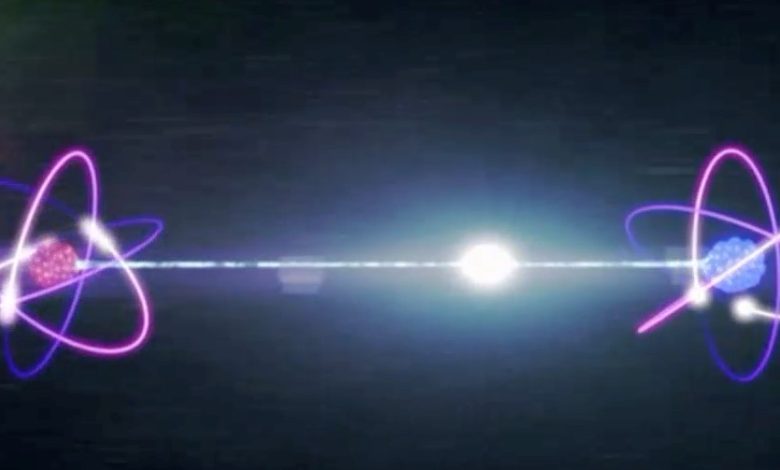What Do Cats and Teleportation Have in Common?
Teleportation Is Not a Futuristic Fantasy Anymore

Quantum physics often defies everyday logic. Schrödinger’s cat—a feline that is both alive and dead until observed—remains one of its most iconic metaphors, illustrating how particles can exist in multiple states at once. This strangeness doesn’t just belong to theoretical puzzles; it underpins how information behaves at the quantum level. Quantum teleportation, which transfers the state of a particle without moving the particle itself, is one such phenomenon that now fascinates physicists and engineers alike.
Teleportation is not a futuristic fantasy, it is already being demonstrated in labs. It challenges us to rethink what “information” is, and how it can be transmitted without material transport. These breakthroughs are opening the door to secure communication and faster computing.
The Precision of the Quantum World
Quantum theory is not just strange—it is staggeringly precise. If you were to measure the distance between London and New York with an error no larger than the thickness of a single sheet of paper, quantum calculations would still be 100 times more accurate than that. This accuracy allows scientists to describe the behaviour of electrons, photons, and atoms in ways that no other theory can match.
This isn’t just theoretical brilliance—it is the foundation of our modern world. Everything from smartphones and MRI machines to solar power and LED lights depends on quantum processes. Even photosynthesis relies on quantum effects to guide energy efficiently through a plant’s structure. Quantum physics, in other words, touches our lives far more than we realise.
What Quantum Teleportation Really Means
Most people imagine teleportation as breaking something into atoms, transmitting it across space, and reassembling it elsewhere. However, quantum teleportation works differently. Itis not about moving matter—it is about transferring the quantum state of a particle to another, identical particle at a distance. It does not involve copying either. According to the no-cloning theorem, it is impossible to make a perfect copy of an unknown quantum state.
Once you measure a quantum system to try to capture its information, you destroy its superposition and collapse it into a single result. So, the only way to “send” a quantum state is to destroy the original as the new one is created—essentially transferring, not duplicating. This makes quantum teleportation unlike anything in classical information science.
Teleportation Without Movement
The process of teleportation depends on quantum entanglement—a phenomenon where two particles become so deeply connected that they instantly mirror each other’s behaviour, no matter the distance. It’s as if they’re linked outside of space and time. This entangled connection makes it possible to transfer the state of one particle to another, without any physical movement between them.
What is especially unusual is that the sender does not even need to know the exact quantum state being transmitted. In fact, trying to measure it would disrupt the process. All of this challenges how we understand both space and information, and it is part of what makes teleportation possible.
Quantum Navigation in Nature
Such entanglement might sound like an artificial laboratory condition, but nature has already mastered it. Birds, for example, rely on quantum effects to migrate. Their eyes contain a light-sensitive protein called cryptochrome. When struck by light, it generates a pair of entangled electrons that respond to Earth’s magnetic field, effectively giving birds a “quantum compass.”
This is a remarkable example of how quantum physics influences biological systems, not just subatomic particles. Researchers are also testing quantum teleportation in large-scale artificial systems. Already, scientists at Delft University have shown that quantum teleportation works in structures made of billions of atoms. It is not just something that happens to tiny particles anymore.
Quantum Internet Becomes Real
In December 2024, researchers successfully transmitted quantum information over a 30-kilometre fibre-optic cable, while the same cable carried regular internet traffic. Quantum signals had previously been thought too fragile to survive in such noisy environments. They used a special wavelength of light and added filters to separate quantum and classical signals, proving that the two forms of communication can coexist in the same infrastructure.
The experiment showed that quantum teleportation can be achieved using systems already in place, such as existing internet networks. This is huge as we do not need to build a completely new internet for quantum data. We can work with what we already have.”
Towards Ultra-Secure Communication
One of the most practical uses of quantum teleportation is ultra-secure communication. Traditional encryption can be broken, but quantum key distribution (QKD) is fundamentally tamper-proof. If a third party tries to intercept the key, the system notices and the signal collapses, making interception impossible without detection.
This technology has already been tested on a global scale. In 2017, the Micius satellite transmitted entangled photons over 1,200 kilometres between two ground stations in China. This demonstration proved that a quantum communication network spanning continents is not only feasible but already underway.
From Lab to Life
Teleportation is now used to transfer information between quantum processors, and it is an essential step in developing quantum computers. These systems promise to solve problems far beyond the reach of today’s technology—from cryptography to new drug discovery. The same principles are also being applied in quantum sensors, which can detect tiny changes in gravity, temperature, and magnetic fields with unprecedented sensitivity.
At the same time, quantum physics continues to raise profound questions about observation and reality. A quantum state can exist in multiple outcomes, but when observed, only one becomes real. This measurement paradox forces us to ask: Does observation shape reality? What does that mean for the boundary between the observer and the observed?




